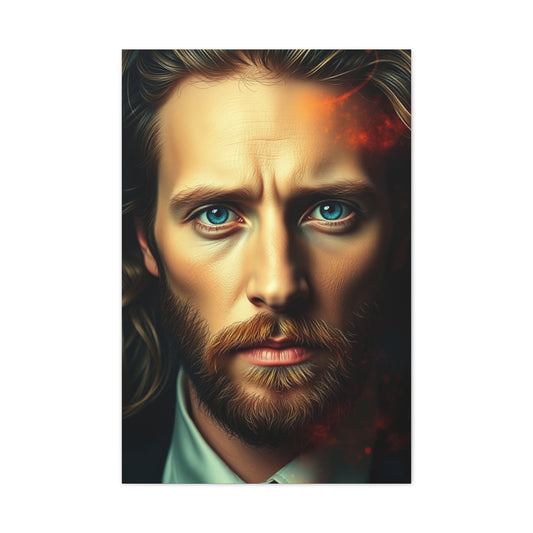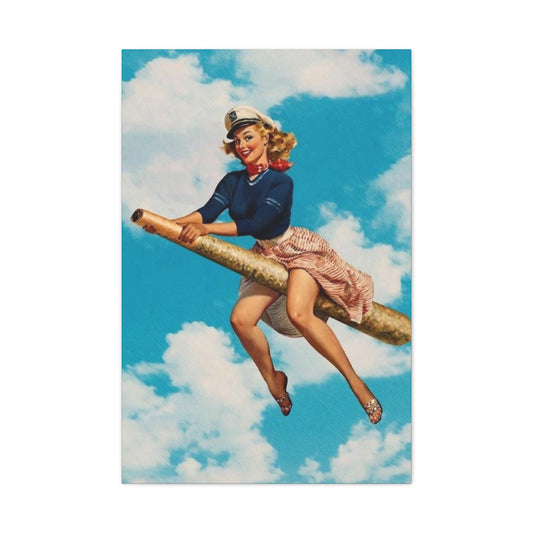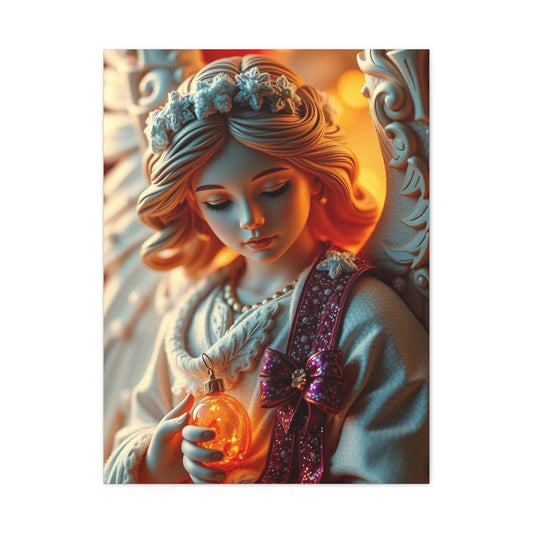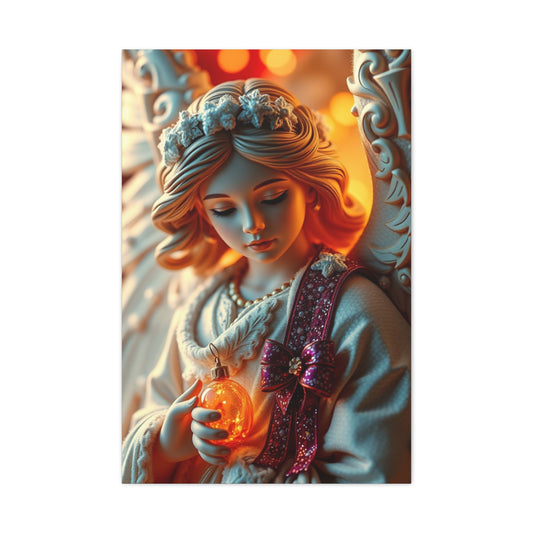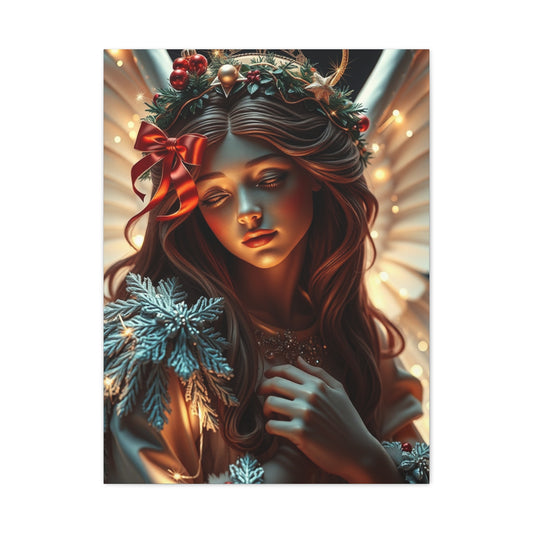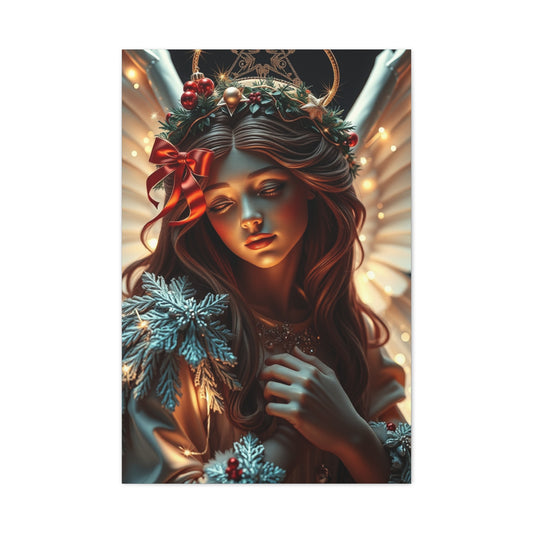Photography is an art form that constantly evolves with new techniques and tools that allow photographers to bring their creative visions to life. If you want to step up your photography game, experimenting with different photography techniques can be a game-changer. Whether you're a beginner or a seasoned photographer, these methods will help you add more variety and creativity to your portfolio, enabling you to produce striking, memorable images. In this guide, we'll explore some of the most impressive photography effects and explain how to easily incorporate them into your photos. With the right techniques, you can transform ordinary shots into something extraordinary.
1. Get Creative with Light Art Photography
Light art photography, commonly referred to as light painting, is a captivating and inventive technique that allows photographers to create visually striking and unique images by manipulating light sources in long exposure shots. The basic principle of light art photography involves moving a light source through the scene while the camera captures the motion during an extended exposure time. This results in a photograph filled with luminous trails that interact with the environment in mesmerizing ways.
One of the essential tools for creating light art is a camera that allows for long exposure settings, typically ranging from 10 seconds to several minutes. A tripod is also crucial for stabilizing the camera, ensuring that the background remains sharp while only the light trails are captured in motion. For the light source itself, you can use anything from standard flashlights to specialized LED glow sticks. A great option for beginners and enthusiasts alike is the ISILER LED Glow Stick, which offers a wide range of 15 different vibrant colors that can be used for up to 12 hours on a single charge. These versatile glow sticks allow for a broad spectrum of creative possibilities, as their colors and brightness levels can be altered to suit various types of light painting.
When experimenting with light art, consider moving the light source in different patterns to produce different effects. You could swirl the light in circles to create hypnotic spirals, zigzag it for an energetic, jagged effect, or even trace out letters and shapes to spell words or form figures. The beauty of light art photography lies in its endless possibilities and the freedom it offers to experiment with various techniques. For instance, while creating portraits using light painting, you could illuminate the subject's face or body in an abstract way, adding layers of emotion and visual intrigue. Likewise, long exposure can be used to incorporate surrounding elements such as trees, buildings, or streets, blending them with the movement of the light in a surreal and ethereal way.
Light art photography is not limited to portraits; it can also be used for landscape photography, abstract shots, and even architectural images. The technique is especially effective when shooting at night, where the contrast between the dark surroundings and the light trails can create extraordinary and dreamlike images. Light painting in combination with other photography techniques, such as light trails from traffic, star trails, or motion blur, can lead to truly exceptional works of art that capture the imagination of viewers.
Although light painting is often associated with the night or dark environments, it is also possible to experiment with this technique in daylight, especially during the golden hour or twilight, when the natural light softens. The ability to create light trails at any time of day opens up even more opportunities for photographers to experiment with the style and produce captivating visuals.
2. Make Use of Silhouettes for a Striking Effect
Silhouette photography is one of the most effective and dramatic techniques in a photographer's toolkit. It involves capturing your subject against a bright light source, such as the sky during sunset or sunrise, or even bright artificial lights. The backlighting highlights the contours of the subject, while the camera exposure ensures the subject remains a dark, shadowy figure against the illuminated background. This technique creates a stunning contrast that draws attention to the form and outline of the subject while concealing the details.
The power of silhouette photography lies in its simplicity. The absence of intricate details forces the viewer to focus on the subject's shape, which can make the photo feel more universal and emotionally evocative. It’s a powerful tool for portrait photography because it emphasizes the subject’s posture, expression, or interaction with the environment. Silhouettes work exceptionally well for creating mysterious, artistic, or dramatic effects, as they allow the imagination of the viewer to fill in the gaps of what the subject might be doing or feeling.
To create a striking silhouette, you need to carefully choose your location. Look for a place where you can place the subject in front of a clear and bright light source, such as an open sky, a glowing sunset, or a streetlight. The best times to create silhouettes are during the golden hour (just before sunset or after sunrise), as the light is softer, and the contrast between the subject and the background is more pronounced. However, silhouettes can also be captured with artificial lights, such as studio lights or lighting from a lamp or window.
|
Related Catagories: |
Once you have selected your location, position your subject in a way that they are clearly distinguishable and will stand out against the background. To achieve a successful silhouette, the subject needs to be completely backlit, so make sure the light source is positioned directly behind them. Depending on the intensity of the backlight, the exposure may need to be adjusted to prevent overexposure of the light source, ensuring that the subject remains in shadow while the background is brightly illuminated.
One of the key aspects of silhouette photography is the shape of the subject. Because there is no visible detail or texture, the outline and posture of the subject are critical. For this reason, you should pay attention to the subject's body language and positioning, making sure they are posed in a way that conveys emotion or tells a story. For example, capturing a person raising their arms against the backdrop of a sunset can symbolize freedom or celebration, while a person sitting in a contemplative pose can evoke feelings of solitude or reflection.
In addition to portraits, silhouettes can also be used effectively in nature and landscape photography. For instance, a tree’s branches or the shape of a mountain can make for interesting and visually appealing silhouettes when positioned against a setting or rising sun. Animals and wildlife also make compelling subjects for silhouette shots, especially when they are in motion or performing an action, such as flying birds or a horse galloping through a field.
Silhouettes allow for a high level of creativity and flexibility in both indoor and outdoor photography. The simplicity of the technique, combined with the dramatic contrast between light and dark, makes it a go-to choice for photographers looking to create visually compelling and emotional images. Experimenting with different angles, backlighting sources, and subject positioning can result in endless unique shots, making silhouette photography an invaluable tool for photographers of all skill levels.
3. Create Fascinating Reflection Shots
Reflections can add a surreal and artistic element to your photography, transforming an ordinary scene into something extraordinary. While a body of water is often the first surface that comes to mind for capturing reflections, many other surfaces exhibit reflective properties, such as windows, glass facades, and even metal. The beauty of reflection photography lies in the ability to capture an alternate version of the world, giving your photos an ethereal quality that evokes intrigue and wonder.
One of the best surfaces for reflections is large bodies of water, such as lakes, rivers, or ponds. When the water is still and undisturbed, it acts like a giant mirror, perfectly capturing the surrounding environment. The clarity and symmetry of reflections in calm waters are unparalleled, making them an excellent choice for nature photography, especially when capturing landscapes at sunrise or sunset. The tranquil surface of the water can enhance the overall mood of the image, giving it a peaceful, almost dreamlike atmosphere.
Another reflective surface that photographers often overlook is puddles. After a rainstorm, puddles can form temporary reflective surfaces that provide a unique opportunity for creative shots. The beauty of puddles is their fleeting nature—once the water evaporates, the reflection disappears. This temporary quality adds a layer of excitement to your photography as you race to capture the perfect shot before the reflection vanishes. Puddles also allow for a different perspective compared to larger bodies of water, offering smaller, more intimate reflections that can add a sense of intrigue or mystery to your compositions.
In urban environments, reflective glass facades on buildings offer another excellent opportunity for capturing reflections. These glass surfaces act as mirrors, reflecting the surrounding architecture, sky, or even people walking by. By positioning yourself at the right angle, you can create visually captivating images where the reflection blends with the real world, offering a new dimension to the scene. This technique works particularly well in cityscape photography, where modern architecture and the interplay of light and reflections create visually striking compositions.
|
Related Catagories: |
When working with reflections, it's important to pay attention to how you position your camera. Sometimes, the best reflection shots come from slightly unusual angles. Rather than shooting directly at the reflective surface, try tilting your camera to capture a more dynamic or abstract image. Additionally, consider how the light interacts with the surface. Natural light, particularly during the golden hour, can create soft, warm reflections that bring a sense of serenity to your photo, while harsh light can create sharp, high-contrast reflections, adding a more dramatic and bold effect to your shot.
To enhance the quality of your reflection photos and minimize distractions like glare, use a circular polarizing filter. This filter is an essential tool in reflection photography, as it helps reduce unwanted reflections and glare from surfaces such as water or glass. It also saturates the colors in the reflection, allowing the scene to appear more vivid and detailed. By rotating the polarizer, you can adjust the intensity of the reflection and fine-tune the image for the best effect.
In addition to using a polarizing filter, pay attention to the timing of your shots. Early morning or late afternoon are ideal times for capturing reflections, as the light is softer and more diffused, resulting in clearer and more visually appealing reflections. The stillness of the water, combined with the golden or blue hues of the sky, will give your photos a tranquil and serene quality that draws viewers in.
4. Master Bokeh for an Enchanting Look
Bokeh is a photographic technique that refers to the aesthetic quality of the out-of-focus areas of an image, especially when the background is made up of points of light. The term "bokeh" originates from the Japanese word "boke," which means "blur." The bokeh effect is created by using a shallow depth of field, which blurs the background while keeping the main subject in sharp focus. The result is a visually captivating image where the background transforms into a soft, dreamy blur that enhances the subject in the foreground.
To achieve the best bokeh, you need to use a lens with a large aperture, typically an f/1.4, f/1.8, or f/2.8 lens. A wide aperture allows you to create a shallow depth of field, making the background blur out into soft, smooth circles of light. When photographing subjects against a backdrop of lights, such as street lamps, fairy lights, or city lights, these light sources will naturally form bokeh. The further the lights are from your subject, the more pronounced the bokeh effect will be.
The key to creating beautiful bokeh is to ensure there is enough distance between the subject and the background. The greater the separation, the more the background will blur. In addition to choosing the right lens and aperture, another factor to consider is the shape of the bokeh itself. Typically, bokeh takes the form of round, blurred circles, but with a little creativity, you can modify the shape of these blurred lights.
One way to customize the bokeh is by using a technique called "custom bokeh." This involves placing a disc with a shaped hole (such as a star, heart, or circle) over your camera lens. This modification alters the way light is captured, turning the usual circular bokeh into unique, eye-catching shapes. Custom bokeh is a fun way to add a personal touch to your images, especially when photographing portraits, holidays, or festive events where lights are abundant.
If you want to further enhance your bokeh and make the background even more enchanting, try photographing your subject in a setting where there are numerous small light sources scattered throughout the scene. Street lights, holiday lights, or even light reflections on surfaces can all contribute to a vibrant, magical bokeh effect. The colors of the lights, such as red, blue, or green, can also influence the mood and tone of the image, adding another layer of creativity to your composition.
While bokeh is often associated with portrait photography, it can be used effectively in a wide range of other genres. For example, in nature photography, bokeh can add a soft, ethereal quality to flower close-ups or forest scenes, creating a dreamy atmosphere. In macro photography, bokeh can emphasize the intricate details of a subject, such as a dewdrop on a leaf or the delicate petals of a flower, while allowing the background to melt away into a soft blur.
Bokeh is a versatile and powerful technique that can transform an ordinary image into something magical. Whether you're using it to enhance portraits, nature shots, or creative compositions, bokeh allows you to play with light and blur to create enchanting visuals. The key to mastering bokeh is to experiment with different lenses, apertures, and background elements to find the perfect balance between subject and background.
5. Experiment with Lensball for Upside-Down Photos
The lensball is a fascinating and unique photography tool that offers a mesmerizing optical effect, allowing you to capture refracted, upside-down images within a glass sphere. This simple but powerful device can transform ordinary landscapes, nature scenes, or architectural shots into visually striking photographs that intrigue and captivate viewers. By capturing the world inside the lensball, you create an alternative, inverted view of reality, which adds an artistic and surreal quality to your images.
To use a lensball effectively, you need to first position it in front of your subject. Depending on the size and the distance of the background, adjust the placement of the lensball to ensure the scene behind it appears inverted within the sphere. This technique gives a dynamic twist to a traditional photograph, creating a scene within a scene, where the world seems to be viewed through a lens of magic. The lensball's transparency allows the captured world inside to reflect and refract light in unique ways, producing striking visual effects that wouldn’t be possible with a conventional lens.
Using a macro lens is highly recommended when working with a lensball. The macro lens allows you to focus closely on the sphere while blurring the background into beautiful bokeh. This blurring effect adds another layer of interest and contrast, creating a focal point on the lensball while still maintaining a sense of the environment around it. As you experiment, you’ll notice how the background transforms, providing you with a range of creative possibilities for your photos.
Another exciting feature of lensball photography is the ability to experiment with different angles. By slightly shifting the angle of the ball, you can alter the reflection and refraction of the light and scene inside it. Depending on your perspective, you may reveal more of the background, adjust the curvature of the inverted reflection, or even create abstract, distorted images. This flexibility makes the lensball a fun and highly creative tool, as the results will vary greatly depending on how the ball is held and the environment surrounding it.
Lensball photography is particularly well-suited for outdoor environments, where the natural beauty of landscapes, mountains, forests, and bodies of water can be captured inside the sphere, creating a harmonious blend of nature and art. Urban environments, with their towering skyscrapers, architectural details, and city lights, also provide perfect backdrops for lensball shots. The ball reflects the city’s energetic vibe, capturing an intriguing perspective that contrasts with the usual wide-angle views.
What makes lensball photography even more exciting is the sense of surprise it brings to your images. The upside-down world within the ball offers an alternative reality that surprises the viewer, engaging their curiosity as they try to make sense of the scene. It’s a fun, artistic way to experiment with perspectives, and the results are often visually stunning and thought-provoking.
As with any photography tool, practice is key to mastering lensball photography. Experiment with different lighting conditions, such as capturing the ball during the golden hour when sunlight creates warm and dynamic reflections. Also, try shooting at different times of day to see how the light affects the way the lensball refracts the scene. By exploring different angles, compositions, and backgrounds, you can truly unlock the potential of the lensball and create images that will stand out in your photography portfolio.
6. Unlock Dreamlike Effects with Infrared Photography
Infrared photography is one of the most captivating and unconventional techniques in the world of photography, as it allows you to capture a portion of the light spectrum that is invisible to the human eye. By using specialized infrared filters or cameras modified to capture infrared light, photographers can produce dreamlike, surreal images that present the world in an entirely new way. The result is a set of otherworldly images where familiar landscapes and scenes appear transformed, offering a unique perspective that is both mysterious and magical.
The fundamental concept behind infrared photography is the ability to photograph infrared light, which is beyond the visible spectrum. While our eyes cannot perceive infrared light, it interacts with objects in the environment in ways that create striking contrasts. For example, foliage and plants, which strongly reflect infrared light, often appear bright white or light pink, while the sky and water absorb infrared light, turning dark. This stark contrast between the light and dark areas of the photograph is one of the hallmarks of infrared photography, and it adds a surreal, dreamlike quality to the image.
To achieve stunning infrared photos, the first step is to equip your camera with an infrared filter or use a camera that has been modified to capture infrared light. The filter blocks all visible light and allows only infrared wavelengths to pass through. As a result, the scene you capture will appear drastically different from how it looks to the naked eye, with foliage glowing in unexpected ways and the sky taking on dramatic tones. For best results, use a tripod to stabilize the camera during long exposure shots, as infrared photography often requires slower shutter speeds, especially in lower light conditions.
Choosing the right time and lighting conditions is essential for successful infrared photography. Bright, sunny days are ideal for infrared photography, as the sunlight enhances the contrast between the infrared-sensitive objects, such as trees and plants, and the darker sky or water. The light’s intensity brings out the best of the infrared effect, resulting in striking images with high contrast. However, the high exposure times required for infrared shots make a tripod crucial, as it will help ensure the image remains sharp and free from camera shake.
While infrared photography can produce incredible effects during the daytime, it can also be used creatively at night. Capturing infrared light in low-light conditions results in different outcomes compared to daytime shots, offering a unique challenge for photographers seeking to explore this technique in new ways. The long exposures needed to capture enough infrared light at night can result in an eerie, almost ghostly atmosphere, making it perfect for capturing urban environments, architecture, or even portraits with a haunting, dreamlike quality.
One of the most important aspects of infrared photography is post-processing. Since infrared images often come out with a red or sepia-toned hue, it is essential to adjust the white balance during editing to achieve the desired effect. By tweaking the colors, contrast, and exposure in software like Lightroom or Photoshop, you can enhance the surreal appearance of your infrared images and create stunning visual effects. Many photographers also experiment with color channel swapping, where the red, green, and blue channels are mixed, resulting in even more unique and dramatic results.
Infrared photography allows you to see the world from a completely different angle. It transforms the everyday into something extraordinary, presenting familiar landscapes with an ethereal, almost mystical quality. Whether you’re capturing the soft, glowing leaves of a forest, the dark, foreboding sky, or a tranquil water body that has taken on an otherworldly appearance, infrared photography offers endless opportunities for artistic exploration.
By experimenting with infrared photography, you can unlock an entirely new dimension of creative expression. The ability to capture light and color that is otherwise invisible to the human eye gives you the power to transform mundane scenes into captivating works of art that evoke emotion and wonder. As you explore this technique, you’ll discover the immense potential for creativity and visual storytelling that infrared photography brings to the table.
7. Capture the Passage of Time with Long Exposure Shots
Long exposure photography is an exciting technique that allows you to visually capture the passage of time by using slow shutter speeds. This technique enables you to portray motion and change over a period, transforming a simple moment into a dynamic, ongoing process. Whether you’re photographing flowing water, moving traffic, or even the rotation of stars across the sky, long exposure photography reveals the fluidity of time, offering an artistic representation of movement that regular snapshots cannot capture.
The primary idea behind long exposure photography is to keep the camera's shutter open for a prolonged period, often ranging from a few seconds to several minutes. This allows the camera to collect light over time, which results in a photograph that can depict the flow of light, movement, and transformation. When used effectively, long exposure can evoke a sense of motion or fluidity, transforming ordinary scenes into something extraordinary.
One of the most popular subjects for long exposure photography is traffic light trails. When photographing busy streets at night, you can use a long exposure to capture the streaks of car lights moving through your frame. These light trails create a mesmerizing effect, giving the viewer a sense of movement and energy within an otherwise static scene. With the right timing and composition, you can create an impression of movement, as the cars seem to flow across the photograph, painting the streets with streaks of light.
Another fascinating application of long exposure is capturing the stars and the Milky Way. As the Earth rotates, the stars appear to move across the night sky, but a regular exposure won’t capture this motion. Long exposure photography, however, can reveal this celestial dance in all its glory. By using a wide-angle lens and a long exposure time, you can create stunning photographs of the night sky that showcase the stars’ movement. For star trails, you can expose the camera for several minutes or even hours, depending on the desired effect, allowing the stars to form intricate trails across the sky. This effect is especially beautiful in areas with minimal light pollution, where the night sky is clear and the stars shine brightly.
Flowing water is another classic subject for long exposure photography. Whether it’s a waterfall, river, or the ocean, the technique of long exposure transforms water into a soft, silky texture that looks almost ethereal. This smooth, flowing look is created by allowing the camera’s shutter to remain open long enough to capture the movement of the water. As the water moves through the frame, it blurs and softens, creating an almost dreamlike effect. To capture the best long exposure water shots, you need to use a tripod to keep the camera steady, as any movement can result in a blurry image. A wide-angle lens is also ideal for capturing expansive scenes, such as large waterfalls or wide stretches of beach, ensuring that the scene is perfectly framed.
To achieve the best results with long exposure photography, a tripod is essential. A tripod ensures that the camera remains completely still during the exposure, preventing any unwanted motion blur and ensuring the sharpness of stationary elements in the scene. In addition, you should use a remote shutter release or the camera’s self-timer function to avoid any shaking when pressing the shutter button.
The key to successful long exposure shots is experimentation. Start with a few basic techniques and adjust the exposure time depending on the effect you want to achieve. For example, shorter exposure times (around 5–10 seconds) are ideal for capturing light trails from moving cars, while longer exposures (several minutes) are better for creating the smooth, flowing effects in water or capturing star trails in the night sky. You can also experiment with different compositions, such as framing the subject in the center or offsetting it for a more dynamic look.
In terms of settings, a small aperture (higher f-stop number) is typically preferred for long exposure photography. This allows less light into the camera, which helps you achieve the long exposure effect without overexposing the image. Additionally, you may want to use a neutral density (ND) filter in bright conditions to further reduce the amount of light entering the lens, enabling you to use slower shutter speeds in daylight without blowing out the image.
Long exposure photography can be challenging, but with practice, it offers the chance to create stunning images that tell a deeper story of time and motion. By experimenting with different techniques and subjects, you can develop your unique style, using long exposure to capture the fluidity and beauty of the world around you.
8. Perfect Landscape Shots with Digital Blending
Digital blending is a powerful technique used by landscape photographers to create natural-looking images with an extended dynamic range. It is often considered an advanced version of High Dynamic Range (HDR) photography. While HDR involves combining multiple exposures of the same scene to create one image with better highlight and shadow details, digital blending offers greater control and flexibility. This technique allows photographers to blend bracketed exposures together in post-processing while preserving the integrity of the scene, resulting in a balanced, high-quality image.
The primary benefit of digital blending is that it enables you to overcome the limitations of a camera's dynamic range. Cameras often struggle to capture both bright highlights and dark shadows in high-contrast scenes, such as landscapes with a bright sky and a shadowed foreground. By using digital blending, you can take multiple exposures of the same scene at different exposures (one for the highlights, one for the midtones, and one for the shadows) and then combine them in editing software like Adobe Photoshop. This allows you to retain details in both the bright and dark areas, ensuring that your image looks natural and balanced, without losing any important elements.
To get started with digital blending, you need to take a series of bracketed images of the same scene at different exposure levels. For example, you might take one exposure that correctly exposes the sky, another for the midtones (the middle of the scene), and a third exposure for the shadows (the dark areas of the scene). These exposures should overlap slightly to ensure smooth blending when combined. After taking the images, use software like Photoshop to align the images and blend the exposures together seamlessly. The most effective way to do this is by using luminosity masks, which allow you to target specific brightness levels in the image for more precise blending. This technique ensures that each exposure is blended in a way that enhances the natural look of the image.
One of the main advantages of digital blending over traditional HDR is that it allows for more subtle adjustments. HDR can sometimes result in unnatural-looking images with overly saturated colors and halos around high-contrast edges. With digital blending, you have more control over the process, allowing you to achieve a more realistic look that doesn’t sacrifice the natural beauty of the scene. By manually blending the exposures, you can retain a high level of detail in the highlights and shadows, producing a photograph that looks as close to what you saw with your eyes.
In addition to being a tool for balancing exposure, digital blending can also be used to create a more artistic, polished look. It allows you to fine-tune the colors, contrast, and sharpness of your images to suit your vision. This flexibility makes digital blending an essential technique for landscape photographers who want to capture the full beauty of a scene, especially in challenging lighting conditions.
For those who specialize in landscape photography, digital blending is a valuable technique to learn. It enhances the quality of your images by ensuring that you capture all the nuances of the scene, from the bright sky to the deep shadows, without losing any important details. It’s an ideal technique for scenes that feature high-contrast elements, such as sunset or sunrise landscapes, where the dynamic range is too wide for a single exposure.
While digital blending requires some practice and skill, it is well worth the effort. The results are often breathtaking images that showcase the true beauty of the landscape, with all the details intact. By combining this technique with other photography skills, such as composition and color theory, you can create stunning landscape photographs that are both natural and striking.
9. Add Mystery and Drama with Low-Key Lighting
Low-key lighting is a popular technique in portrait photography that uses minimal light to create a moody and dramatic effect. The background is typically kept dark, with a small spotlight illuminating only the subject, creating a striking contrast. This technique adds a sense of mystery and emphasizes the subject’s features. To create low-key lighting: Use a single light source, such as an off-camera flash or natural light. Position the light at an angle to cast dramatic shadows on the subject’s face. You can also use a snoot or a similar modifier to focus the light and create a spotlight effect. This technique is especially effective for portraits and artistic photography, giving your subject a bold and intriguing presence.
10. Capture Motion with Panning Photography
Panning is a technique that involves following a moving subject with your camera while using a slower shutter speed. This creates a sharp subject against a blurred background, conveying a sense of speed and movement. It’s an excellent way to capture the dynamic motion of moving objects such as cyclists, runners, or cars. To achieve a successful panning shot: Set your shutter speed to a slower setting (typically around 1/60th of a second or slower). Track the moving subject with your camera while maintaining a smooth, consistent motion. Adjust your shutter speed based on the speed of the subject, with faster-moving objects requiring faster shutter speeds. Panning can be tricky to master, but once you get the hang of it, you’ll be able to capture motion in a way that tells a dynamic and engaging story.
Final Thoughts
Exploring different photography techniques allows you to create visually compelling and unique images that stand out. By incorporating these effects, such as light painting, silhouette shots, reflections, bokeh, and long exposure, you can experiment with creative elements that elevate your photography to new heights. Every technique opens up a world of possibilities for artistic expression, allowing you to experiment, learn, and grow as a photographer. If you haven’t tried these photography techniques yet, now is the perfect time to explore them. Get out there and start experimenting with these incredible effects to add a fresh perspective to your photography.











